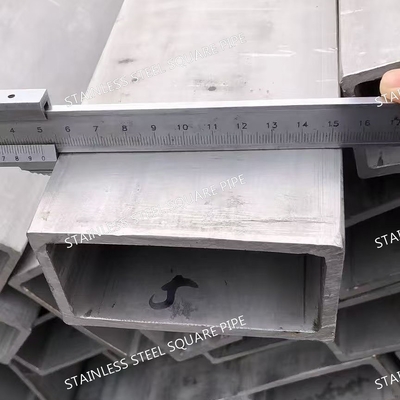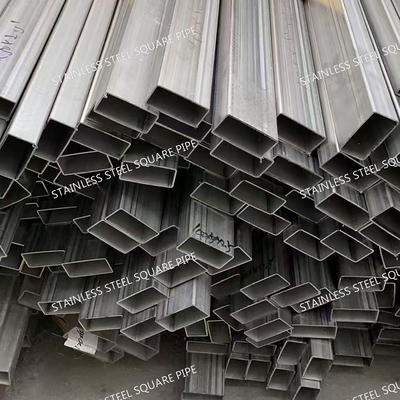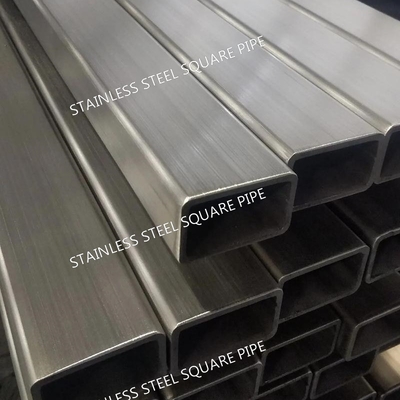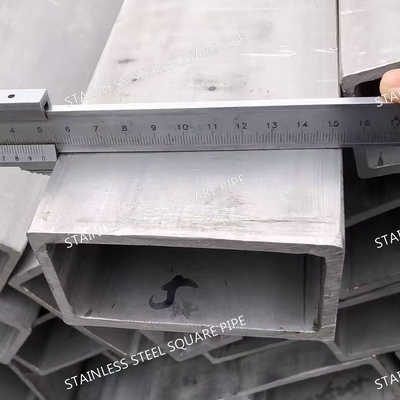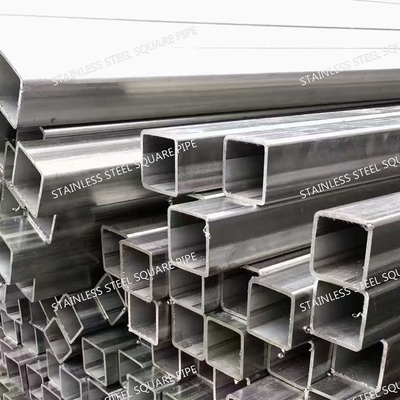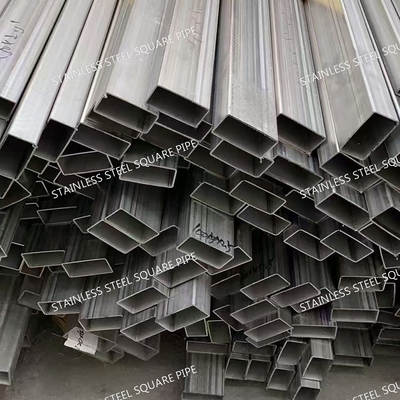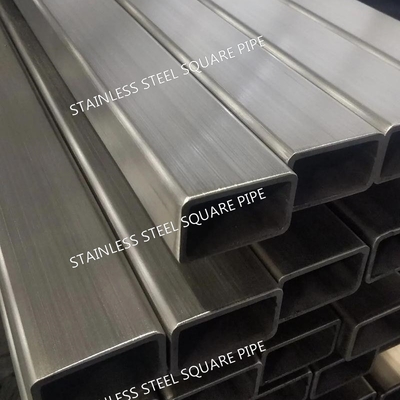-
 Raian Ionescuよい物質的な質非常に。私達は協力することを持っている10年以上。それらはロットの種類の鋼鉄材料を交換する。よいすべての物質的な質。それらすべての物質的な質のための義務。私達はそれらに将来協力し続けるために平になっている
Raian Ionescuよい物質的な質非常に。私達は協力することを持っている10年以上。それらはロットの種類の鋼鉄材料を交換する。よいすべての物質的な質。それらすべての物質的な質のための義務。私達はそれらに将来協力し続けるために平になっている
304ステンレス鋼角パイプ 40x40mm 60x60mm 80x80mm カスタムカット

試供品およびクーポンのための私に連絡しなさい。
Whatsapp:0086 18588475571
Wechat: 0086 18588475571
Skype: sales10@aixton.com
心配があれば、私達は24時間のオンライン・ヘルプを提供する。
x| 製品 | ステンレス角パイプ | グレード | 304 316L 310S 321 2205 |
|---|---|---|---|
| 直径 | DN10 - DN400 | 長さ | 6m または要求に応じて任意の長さのカスタムカット |
| スタンダード | ASTM EN | サービス | 切る |
| ロードポート | 上海港 | 厚さ | 4.0〜50.0mm |
| ハイライト | 304ステンレス鋼角パイプ,40x40mmステンレス鋼パイプ,カスタムカットステンレス鋼管 |
||
| 属性 | 値 |
|---|---|
| 製品 | ステンレス鋼角パイプ |
| グレード | 304 316L 310S 321 2205 |
| 直径 | DN10 - DN400 |
| 長さ | 6mまたはご要望に応じてカスタムカット |
| 規格 | ASTM EN |
| サービス | 切断 |
| 積載港 | 上海港 |
| 厚さ | 4.0 - 50.0mm |
304ステンレス鋼角管は、さまざまな業界で広く使用されている、多用途で耐食性のあるコンポーネントです。オーステナイト系ステンレス鋼である304は、成形性、強度、防錆性の理想的な組み合わせを提供し、耐久性と費用対効果が両立する一般用途に最適な選択肢となっています。
304ステンレス鋼角管は、304合金(クロムニッケルオーステナイト鋼)で作られた中空の角形パイプです。その角形は構造的な剛性を提供し、耐荷重と装飾の両方の役割に適しています。炭素鋼とは異なり、304は、表面に保護酸化層を形成する高クロム含有量(18〜20%)のおかげで、ほとんどの環境で酸化や腐食に耐えます。このグレードは焼鈍状態では非磁性であり、簡単に溶接、曲げ、または複雑な形状に加工できます。
304ステンレス鋼の化学組成は、その主要な特性を定義し、業界標準で厳格な範囲が示されています。
| 元素 | 含有量範囲(%) | 機能 |
|---|---|---|
| クロム(Cr) | 18.0-20.0 | 不動態酸化層を形成し、錆や腐食を防ぎます。 |
| ニッケル(Ni) | 8.0-10.5 | オーステナイト構造を安定化し、延性と靭性を高めます。 |
| 炭素(C) | ≤0.08 | 強度を高めますが、溶接中の炭化物析出を避けるために制限されています。 |
| マンガン(Mn) | ≤2.0 | 脱酸を助け、加工性を向上させます。 |
| シリコン(Si) | ≤1.0 | 高温酸化抵抗性を高めます。 |
| リン(P) | ≤0.045 | 脆性を防ぐために制御されています。 |
| 硫黄(S) | ≤0.03 | 溶接性と耐食性を維持するために最小限に抑えられています。 |
304ステンレス鋼角管は、強度と柔軟性のバランスが取れており、さまざまな用途に適応できます。
| 特性 | 代表値 | 試験規格 |
|---|---|---|
| 引張強さ | 515-690 MPa | ASTM E8 / EN 10002-1 |
| 降伏強度(0.2%オフセット) | ≥205 MPa | ASTM E8 / EN 10002-1 |
| 伸び(50mm内) | ≥40% | ASTM E8 / EN 10002-1 |
| 硬度(ブリネル) | ≤201 HB | ASTM E10 / EN ISO 6506-1 |
| 弾性率 | 〜193 GPa | - |
| 密度 | 8.0 g/cm³ | - |
304角管は、特定のニーズに合わせて幅広いサイズで利用できます。
- 辺の長さ: 6mm~300mm(一般的なサイズ:10×10mm、40×40mm、100×100mm)
- 肉厚: 0.5mm~10mm(構造用または高圧用途には厚い壁)
- 長さ: 標準6m; 大規模プロジェクトの場合は最大12mまでカスタマイズ可能
- 仕上げオプション:
- ミル仕上げ(2B):工業用途向けの滑らかでマットな表面
- 研磨(BA/ミラー):装飾用途向けの光沢のある反射面
- ブラッシュ:建築トリムで人気のサテンテクスチャ
304角管は、一貫性と品質を確保するために世界的な規格に準拠しています。
| 規格 | 発行機関 | 用途 |
|---|---|---|
| ASTM A554 | ASTM International | 溶接ステンレス鋼機械チューブ |
| EN 10217-7 | 欧州委員会 | 圧力用溶接管(ステンレス鋼) |
| JIS G3446 | 日本工業規格 | ステンレス鋼角管 |
| GB/T 12771 | 中国国家規格 | 溶接ステンレス鋼管 |
304角管は、一般的な耐食性が必要な環境で好まれています。
- 建築&建設: 手すり、欄干、窓枠、装飾ファサード(風化に強い)
- 食品&飲料業界: コンベア、醸造設備、貯蔵タンク(清掃が簡単、無毒)
- 医療機器: 病院のベッドフレーム、手術器具トレイ(衛生的で防錆)
- 自動車: 排気コンポーネント、トリム、構造部品(道路塩に中程度に耐える)
- 家電製品: 冷蔵庫の棚、オーブンのドア、食器洗い機の部品(湿気に耐える)
- 水処理: 配管、フィルターハウジング、ポンプコンポーネント(清浄水の腐食に強い)
- 優れた耐食性: ほとんどの大気条件、真水、および軽度の化学薬品で良好に機能します
- 高い成形性: 簡単に溶接、曲げ、または切断できるため、カスタム製造に適しています
- 費用対効果: 316などの高合金グレードよりも手頃な価格で、予算に敏感なプロジェクトに最適です
- 美的魅力: 研磨仕上げは、装飾用途に洗練されたモダンな外観を提供します
- 衛生的: 非多孔質の表面は細菌の増殖を防ぎ、食品および医療安全基準を満たしています
これらのグレードは、特定の用途で304と比較されることがよくあります。
| グレード | 304との主な違い | 最適用途 |
|---|---|---|
| 304L | 低炭素(≤0.03%)で、炭化物析出を低減 | 最大の耐食性を必要とする溶接構造 |
| 316 | モリブデン(2〜3%)を含み、塩化物に対する耐性が向上 | 海洋、沿岸、または高塩分環境 |
| 303 | 硫黄含有量が高く、被削性が向上 | 複雑な機械加工を必要とする部品(例:ファスナー) |
| 430 | フェライト系(ニッケルなし); 低コストだが耐食性は低い | 乾燥した屋内用途(例:家電トリム) |
304ステンレス鋼角管は、ステンレス鋼チューブの主力製品であり、耐食性、成形性、および手頃な価格の優れた組み合わせを提供します。建設から食品加工まで、耐久性と汎用性が重要な一般用途で優れています。ほとんどの非攻撃的な環境では、304は、高グレード合金のプレミアムコストなしで、信頼性の高い性能を発揮します。



